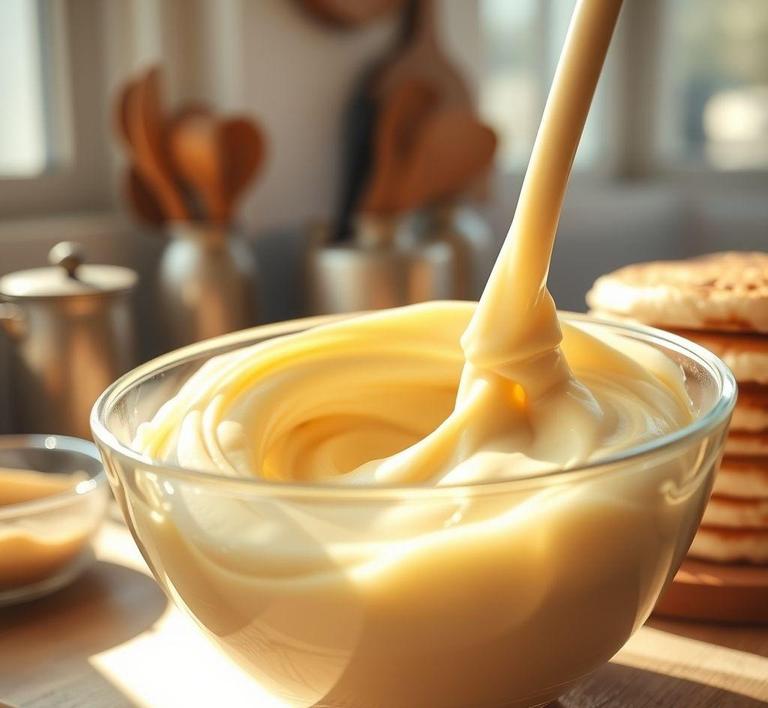If you’ve ever made too much pancake batter and wondered whether you can save it for later, you’re in the right place! Refreezing pancake batter is not only possible but a great way to reduce waste and save time on future breakfasts. Whether you’re meal prepping for busy mornings or simply trying to stretch your ingredients further, knowing how to properly refreeze pancake batter ensures that it retains its flavor and texture when you’re ready to cook. In this guide, we’ll walk you through the best methods for storing and refreezing pancake batter so you can enjoy fluffy pancakes at a moment’s notice without any hassle!
Can You Refreeze Pancake Batter?

Yes, you can refreeze pancake batter, but like many kitchen hacks, there’s more nuance than a simple yes or no. Pancake batter typically consists of flour, eggs, milk, a fat like butter or oil, and a leavening agent such as baking powder or baking soda. These ingredients are fairly resilient, especially when combined into a batter and stored properly. However, the ability to refreeze pancake batter safely and effectively hinges on how it was initially stored, thawed, and the ingredients used.
If your batter has already been frozen once and thawed in the refrigerator (and not at room temperature), it’s generally safe to refreeze. The key consideration is food safety-once thawed at room temperature for an extended period (over two hours), bacterial growth can occur rapidly, making refreezing risky.
Another factor is whether the batter contains perishable add-ins like fruit, dairy-heavy components (such as ricotta), or egg whites that were whipped for fluffiness. These ingredients can degrade in quality more dramatically with repeated freezing and thawing.
How To Refreeze Pancake Batter?
Refreezing pancake batter requires care and attention to detail to preserve its safety and quality. Here’s a step-by-step guide:
-
Assess the Condition of the Batter:
- Was the batter thawed in the refrigerator? If so, it’s safe to refreeze.
- Has it been sitting at room temperature? If it’s been out for more than two hours, discard it.
-
Stir the Batter:
- After thawing, pancake batter can separate or develop an uneven texture. Stir it thoroughly to reincorporate the ingredients before refreezing.
-
Choose the Right Storage Container:
- Use airtight containers or freezer-safe resealable bags. Leave some headspace to allow for expansion.
- Label with the date and contents so you know when it was refrozen.
-
Portion If Necessary:
- Consider dividing the batter into smaller, single-use portions. This avoids the need to thaw and refreeze large batches multiple times.
-
Freeze Quickly:
- Place the batter in the coldest part of the freezer to minimize the time it spends in the temperature danger zone (between 40°F and 140°F or 4°C to 60°C), which is ideal for bacterial growth.
Quality Impact
While refreezing pancake batter is possible, each freeze-thaw cycle can affect the quality in subtle but significant ways:
-
Texture Changes:
- Pancake batter relies on chemical leavening for fluffiness. Leavening agents like baking powder or baking soda may lose their potency after the first freeze, leading to flatter, denser pancakes upon cooking.
- If the batter includes whipped egg whites or other aerated ingredients, these will collapse after thawing, impacting the batter’s rise and texture.
-
Separation:
- Batter may separate upon thawing, with water or other liquids pooling at the top. This is easily remedied by a good stir but may still result in a slightly different mouthfeel.
-
Flavor Deterioration:
- While subtle, prolonged or repeated freezing can dull flavors, especially in batters made with vanilla extract, fresh fruit, or dairy. Flavors might become muted or slightly stale.
-
Moisture Loss:
- The freezing process can slightly dehydrate the batter, especially if not stored in airtight conditions. This can lead to pancakes that are a bit drier than freshly made ones.
In the bustling rhythm of everyday life, convenience often trumps perfection-and pancake batter is no exception. Refreezing pancake batter is not only possible but can be a practical solution to reduce waste and make breakfast preparation quicker. The key lies in mindful handling: ensure the batter is thawed safely, refrozen promptly, and stored correctly.
While there may be some compromises in texture and flavor, the overall outcome-especially when the batter is stirred and cooked with care-remains delicious and satisfying. So the next time you whip up a batch and find yourself with leftovers, rest assured: your future self will thank you for tucking that batter back into the freezer. Just be sure to mark the container-because mystery batter isn’t nearly as exciting as mystery meat.
Is It Safe To Refreeze Pancake Batter?
The short answer: Yes, it is generally safe to refreeze pancake batter – but only under certain conditions. The safety and success of refreezing depend largely on how the batter was handled in the first place.
Pancake batter typically contains a combination of flour, eggs, milk, baking powder or baking soda, and sometimes sugar and butter. These ingredients are perishable, particularly the eggs and dairy. If the batter has been thawed in the refrigerator and has remained at a temperature below 40°F (4°C), then it’s safe to refreeze. However, if the batter has been left out at room temperature for more than two hours (or one hour if it’s a hot day), harmful bacteria such as Salmonella or E. coli could begin to multiply. In that case, refreezing the batter can preserve those bacteria, making it unsafe to consume later.
Refreezing also impacts the texture and leavening ability of the batter. Chemical leaveners like baking powder or baking soda start reacting as soon as they’re combined with liquid. Freezing slows this process, but it doesn’t stop it entirely. So when refrozen, the batter might not rise as effectively, resulting in pancakes that are flatter or denser than usual. While safe, the quality of your pancakes might take a slight hit unless you tweak the batter upon reuse.
Signs That Pancake Batter Should Not Be Refrozen
It’s critical to assess the condition of your batter before you refreeze it. Here are key warning signs that indicate your batter is past the point of no return:
-
Sour Smell:
Pancake batter should smell slightly sweet or neutral. If it emits a sour, tangy, or rotten odor, the dairy or eggs have likely spoiled.
-
Discoloration:
Fresh batter has a creamy off-white color. Any pink, gray, green, or blue tint is a sign of mold or bacterial activity.
-
Curdling or Separation:
While some mild separation is normal after freezing and thawing, especially in batter with buttermilk or yogurt, aggressive curdling (like watery liquid sitting on top of thick, lumpy batter) is a bad sign. This could indicate spoilage or a breakdown of emulsifiers in the ingredients.
-
Presence of Mold:
Any fuzzy patches or discoloration on the surface mean it’s time to discard the batter immediately.
-
Time Mismanagement:
If the batter was thawed and left out at room temperature for more than two hours, don’t refreeze. The risk of bacterial growth is too high.
Common Refreezing Mistakes
People often unknowingly sabotage their pancake batter with some common errors. Here’s what to avoid:
-
Refreezing After Room Temperature Exposure:
Leaving batter out to thaw on the counter is a big mistake. Always thaw in the refrigerator. Bacteria multiply rapidly between 40°F and 140°F – the ‘danger zone’ in food safety.
-
Repeated Freeze-Thaw Cycles:
Constantly thawing and refreezing degrades the structure of the batter. It may become watery, lose its fluffiness, and develop off flavors. Ideally, portion your batter into small, one-use containers so you only thaw what you need.
-
Not Labeling the Batter:
If you don’t label your containers with dates, it’s easy to lose track of how long they’ve been sitting in your freezer. Pancake batter can generally be kept frozen for up to 2 months, but after that, quality drops significantly.
-
Freezing Batter With Whipped Egg Whites:
Some recipes call for whipped egg whites for extra fluffiness. If whipped egg whites are incorporated into the batter before freezing, they can deflate upon thawing, ruining the intended texture.
Tips And Tricks
To make the most out of freezing and refreezing pancake batter, keep these practical tips in mind:
-
Portion Before Freezing:
Divide your batter into individual or family-sized portions in airtight containers or freezer bags. Remove as much air as possible to prevent freezer burn.
-
Use a Vacuum Seal or Double Wrap:
For long-term storage, vacuum-sealing or wrapping the container in an extra layer of plastic wrap or foil helps preserve freshness and prevent freezer odors from seeping in.
-
Add Fresh Leavening After Thawing:
Since leavening agents can lose potency over time and through freezing, stir in a fresh pinch of baking powder or baking soda after thawing the batter to reinvigorate the rise.
-
Freeze Batter in Muffin Tins:
For grab-and-go pancake portions, fill muffin tins with batter and freeze until solid, then transfer the discs to a freezer bag. You can thaw just what you need.
-
Label with Ingredients and Date:
Especially if you’re using custom batters (e.g., gluten-free, high-protein, blueberry, etc.), labeling helps you remember what’s in each container – and ensures you use it before it goes bad.
-
Mix Before Use:
After thawing, always give the batter a gentle but thorough stir to redistribute any separated ingredients before cooking.
Conclusion
Refreezing pancake batter is safe and practical – provided you follow food safety guidelines and treat the ingredients with care. Recognizing spoilage signs, avoiding poor storage habits, and adopting smart freezing strategies will help maintain both the safety and deliciousness of your batter. By portioning wisely, refreshing leaveners, and thawing with intention, you’ll ensure that every pancake you flip – whether today or two months from now – is golden, fluffy, and satisfying. So go ahead and embrace the convenience, just do it the smart way. Happy flipping!

